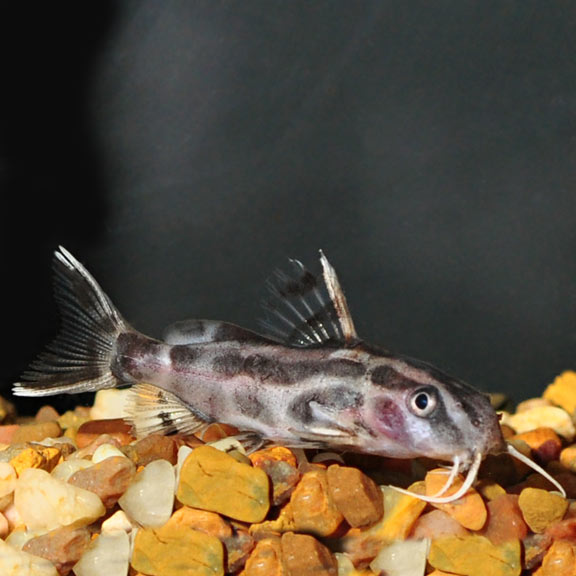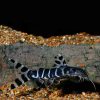No products in the cart.
The Synodontis flavitaeniatus Catfish, often referred to as the Yellow-Striped Synodontis, is one of the most beautifully patterned species of African catfish in the hobby. Originating from the Congo River Basin in Central Africa, this freshwater species has a striking appearance, with a creamy to light brown body covered in black spots and highlighted by horizontal golden-yellow stripes along its flanks. Its elegant contrast of colors, combined with its active yet peaceful personality, makes it a favorite among aquarists who appreciate unique and exotic bottom-dwelling fish.
Growing to around 6 to 7 inches in length, the Synodontis flavitaeniatus is smaller than many other members of the Synodontis family, making it an excellent choice for medium-sized community aquariums. Despite its manageable size, it is still a hardy fish that appreciates plenty of swimming room. An aquarium of at least 40 to 55 gallons is recommended, with soft sand or fine gravel as a substrate to protect its sensitive barbels. Hiding places are essential, and aquarists should provide rock caves, driftwood, and shaded spots where the catfish can retreat during the day.
Water conditions should closely match its natural habitat, with a temperature range of 75–82°F (24–28°C), a pH of 6.5 to 7.5, and moderate hardness. Clean, well-filtered water is crucial for its health, as this species thrives in environments with good oxygenation and regular water changes. Like most Synodontis catfish, it is a nocturnal species, becoming more active in the evening and night hours. However, it will often venture out during the day in a well-established, calm aquarium.
The Synodontis flavitaeniatus is an omnivore, and its diet in the wild includes insect larvae, worms, plant material, and small crustaceans. In the aquarium, it adapts well to a varied diet of sinking catfish pellets, algae wafers, and frozen or live foods such as bloodworms, brine shrimp, and blackworms. It will also graze on leftover foods that settle at the bottom, making it a helpful scavenger. To keep its colors vibrant and its body condition strong, a balanced mix of high-quality prepared foods and fresh supplements should be provided.
This catfish is considered peaceful and works well in community setups with similarly sized fish. It is generally safe with tetras, barbs, cichlids, rainbowfish, and even other Synodontis species, provided the tank is large enough and has multiple hiding places. While it is social, it may become territorial with its own kind if space is limited, so keeping either a single specimen or a small group in a sufficiently large aquarium is ideal.
Aquarists often ask several questions about the Synodontis flavitaeniatus. One of the most common is about its maximum size, and it typically reaches 6 to 7 inches. Another common question is whether it is peaceful, and it is considered one of the more community-friendly Synodontis species. Many ask about its diet, and the answer is that it thrives on a mixed omnivorous diet of pellets, frozen foods, and vegetables. Some wonder about tank mates, and this catfish does well with medium to large peaceful species. Finally, aquarists often ask about lifespan, and with proper care, the Synodontis flavitaeniatus can live for 10 to 15 years, making it a long-term companion.
For aquarists who enjoy keeping unique African species, the Synodontis flavitaeniatus Catfish is a rewarding addition to the aquarium. Its distinct pattern of yellow stripes and black spots, along with its hardy nature and compatibility with community setups, make it an excellent choice for both intermediate and advanced fishkeepers. To learn more about Synodontis catfish and other African riverine species, aquarists can refer to Seriously Fish, a reliable resource for freshwater fish profiles.
Be the first to review “Synodontis Flavitaeniatus Catfish” Cancel reply
Related products
Sale!
Plecostomus
Sale!
Plecostomus












Reviews
There are no reviews yet.